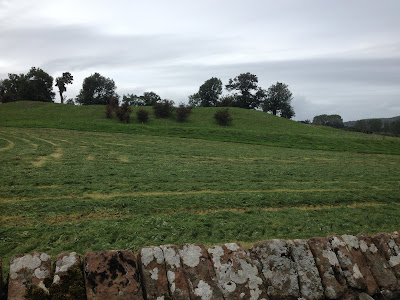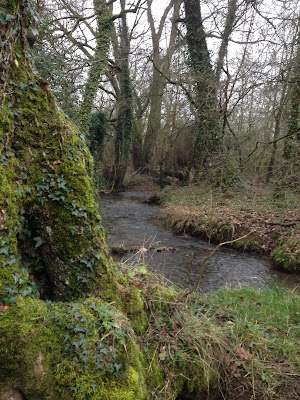Castlerigg stone circle lies on the
eastern edge of the Lake District near the town of Keswick. Its name derives
from Carsles or Carles, a name recorded in the 18th century and deriving from the French carole, meaning a circular dance. It's interesting how many stone circles are linked to dancing. It was
built around 3200BC, making it one of the earliest stone circles in Britain.
The circle is 30 metres in diameter
and originally comprised 42 stones, of which 38 remain. The stones are glacial
erratics, probably from fairly close by, and most are 1-1.2 metres in height.
Two taller stones flank the north-facing entrance, and an offset pillar to the
southeast, almost 2 metres tall, aligns to the sunrise at Samhain (1st
November) and Imbolc (1st February).
A rectangular setting of about twelve
smaller stones stands in the eastern part of the circle and focuses on the prominent
hill of Clough Head on the skyline.
Another standing stone is found near
the western edge of the site. Its original location is now unclear but it may
have come from the circle itself or was perhaps another outlier stone.
The internal rectangular setting
Castlerigg is sited on an area of
gently sloping higher ground, surrounded by the settled areas and farmland that
have long filled the lowlands of the area. The ring of stark mountains and
fells beyond provides a contrasting backdrop and reflects the varied topology
and spirit of the Lake District. Thanks to the slope of the ground, fairly
little of the immediate area is visible from the circle, and conversely, the circle
was perhaps equally hidden until the final approach up the hillside. This would
have added an air of magic to the site.
The outlier stone which is angled towards the Samhain sunrise
Castlerigg, like Mayburgh Henge 15
miles to the east, is linked to the manufacture and trade of polished stone
axes which were made from green volcanic tuff found in a few isolated and
inaccessible hillsides deep in the Lake District mountains. Three of these axes
and an unpolished roughout have been found inside the circle.
The north-facing entrance faces what
is now the main road from Penrith to Keswick and what has probably always been
the major route into the Lakes. From the circle, the main view is the wide
valley to the southeast which leads to the villages of Grasmere and Ambleside
and then to the Langdale valley where the axe quarries were accessed. Castlerigg
was certainly there to oversee the routeways used by the special greenstone and
the people who worked it.














